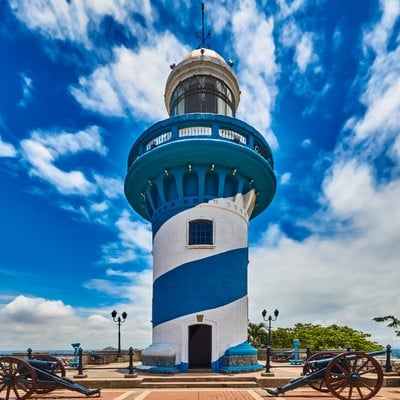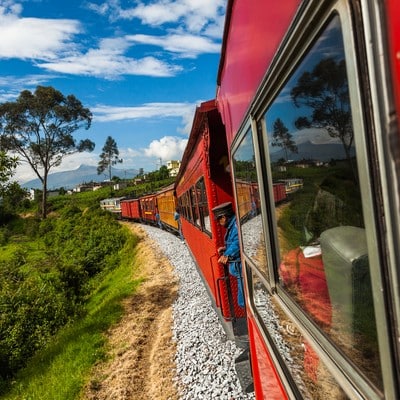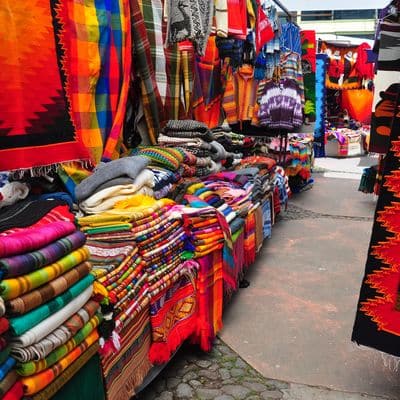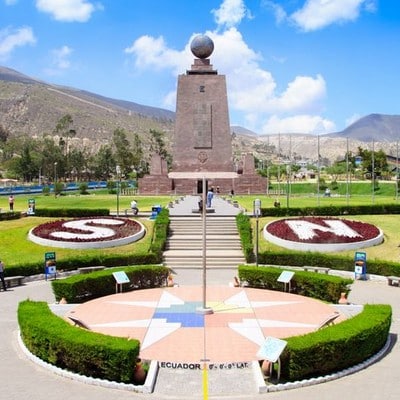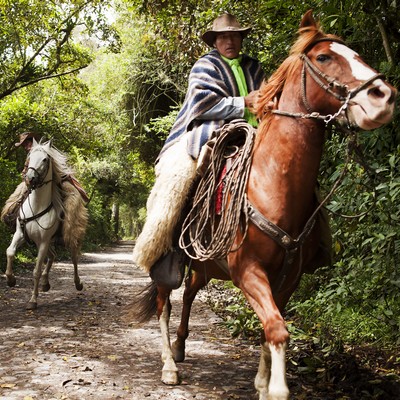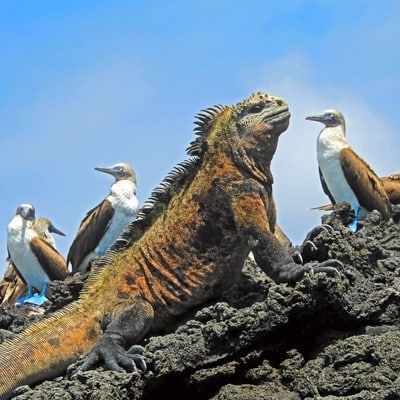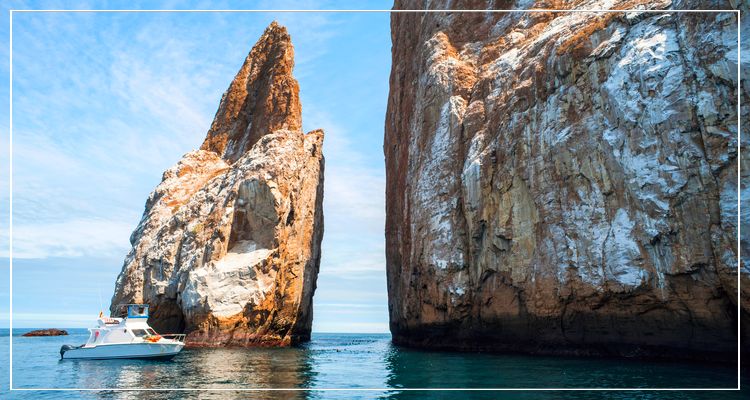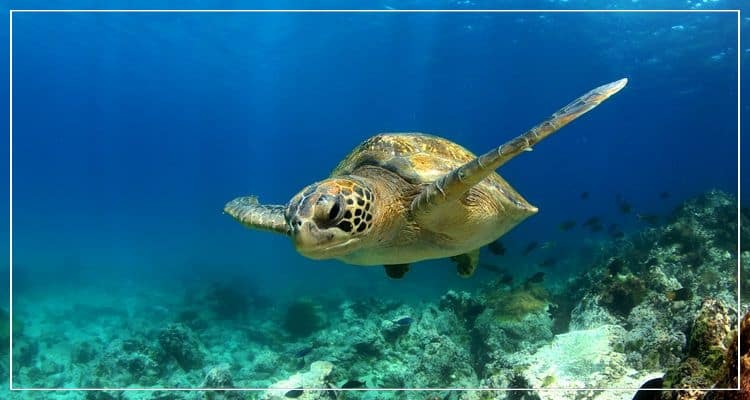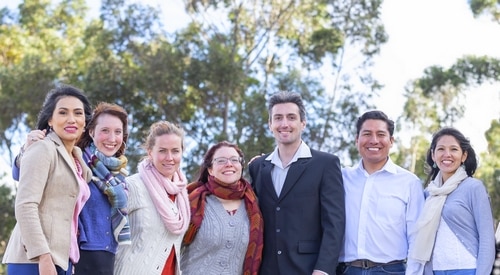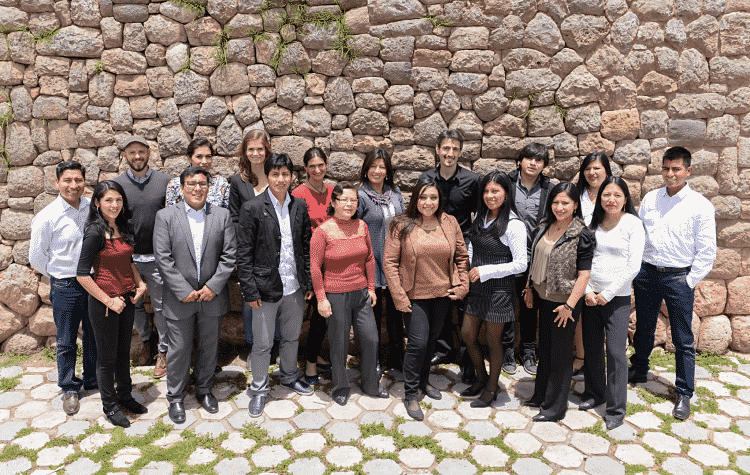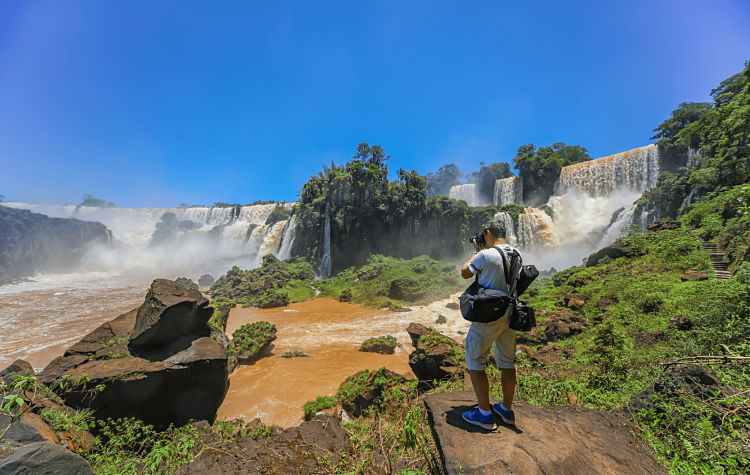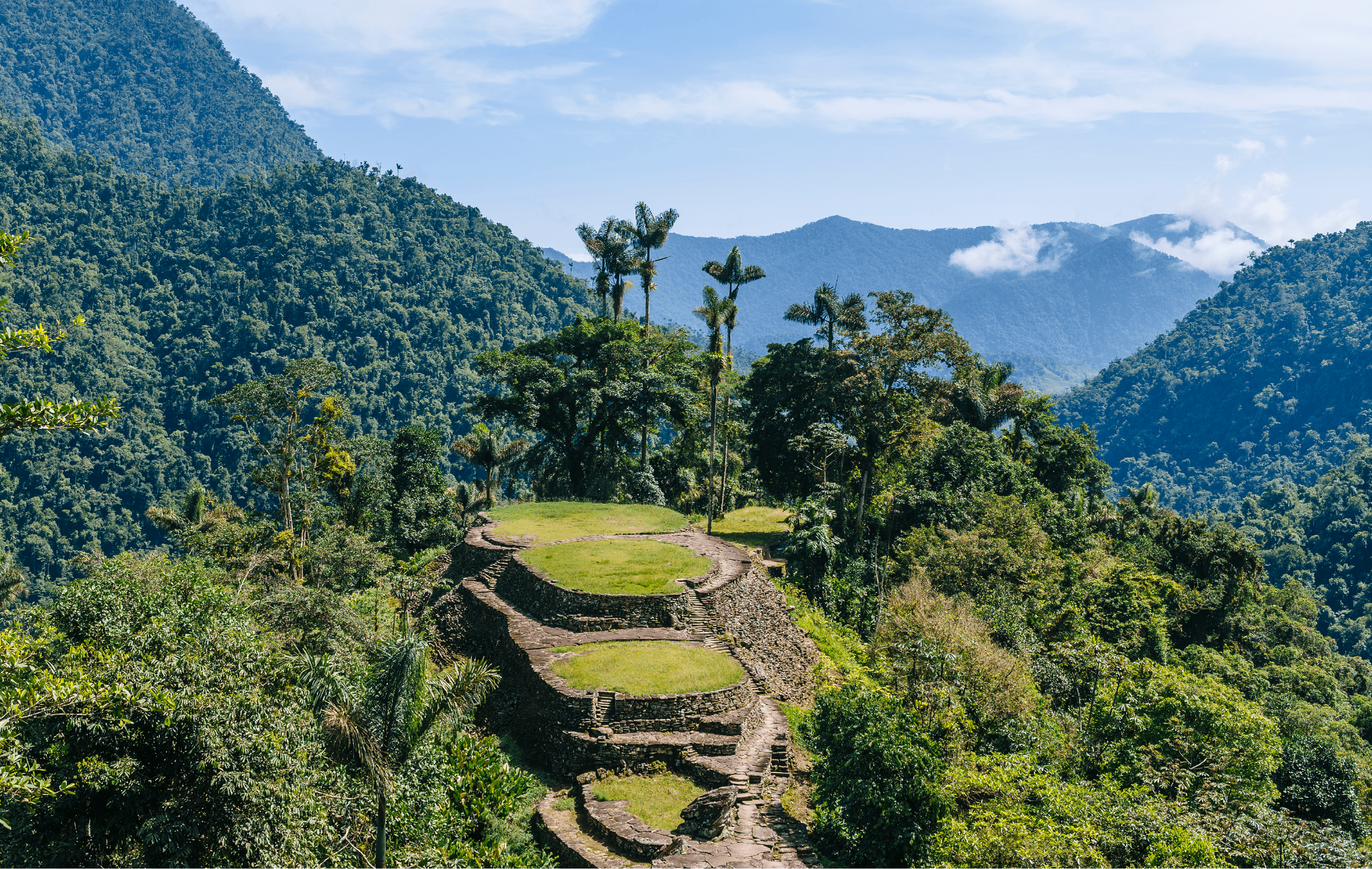GUAYAQUIL
TREN CRUCERO
OTAVALO
QUITO
HACIENDA ZULETA
GALAPAGOS ISLAND
- Step aboard the luxury Tren Crucero for your journey from coast to Andes.
- Marvel at the series of majestic peaks that line the so-called Avenue of Volcanoes.
- Chat with local artisans and hunt for a bargain at Otavalo, the setting of South America’s oldest, largest and most famous market.
- Dive into Quito’s rich colonial past in the city’s UNESCO-listed historical core.
- Hop between hemispheres at the Middle of the Earth Equator marker.
- Travel by luxury yacht between the Galapagos Islands – where Charles Darwin’s revolutionary theory of evolution was born.
- Face to face encounters with exotic wildlife such as the Giant turtles, the Blue-footed Boobies and much more all throughout the Galapagos Islands!
- Discover hidden treasures as you snorkel pristine beaches.
- Take your pick from a range of luxury hotels, lodges and accommodations.
- DAY 1 - Welcome to Ecuador!
- Day 2 - Guayaquil
- Day 3 - Ecuadorian Railway
- Day 4 - Daring to Traverse the Devil’s Nose
- Day 5 - Ecuador’s Avenue of Volcanoes
- Day 6 - Cultural Wonders on the Tracks to Otavalo
- Day 7 - Quito, the Middle of the World
- Day 8 - Out of Quito to Zuleta
- Day 9 - Hacienda Zuleta
- Day 10 - To the Galapagos Islands!
- Day 11 - Galapagos Islands
- Day 12 - Galapagos Islands
- Day 13 -Galapagos Islands
- Day 14 – Galapagos Islands to Mainland Ecuador
- Day 15 - Homeward Bound
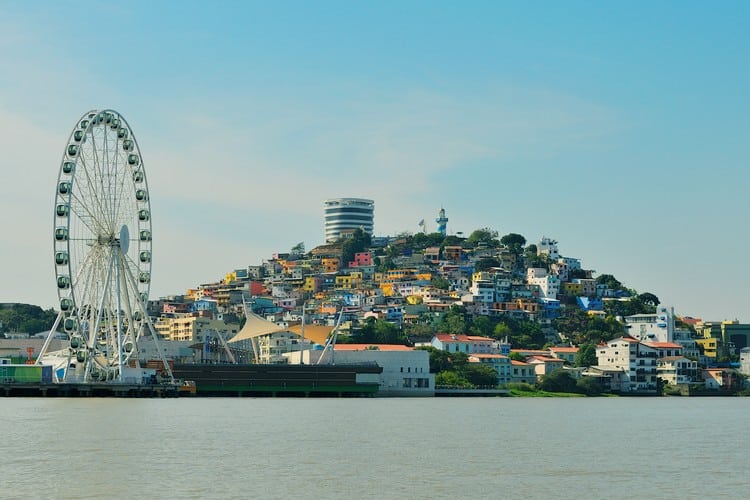
Today, after a delicious breakfast, we will discover Guayaquil, the gateway to the Galapagos. The city has been transformed over recent years with its newly restored historic district characterized by centuries-old houses and narrow lanes.
Las Peñas is the city’s oldest district, and once you’ve navigated its colorful streets you’ll be guided up 444 steps to the summit of Cerro Santa Ana for panoramic vistas of the city. As well as this Guayaquil cradles a string of excellent options to explore: a stately cathedral, Iguana Park (named after the resident creatures here) and the modern Malecon 2000 which hugs the Guayas River and is home to the towering Moorish Clock Tower, botanical gardens and Chamber of the Rotunda. This monument marks the historic meeting between Simon Bolivar and Jose de San Martin in the 19th century, reflecting a huge turning point in the history of the country.
.
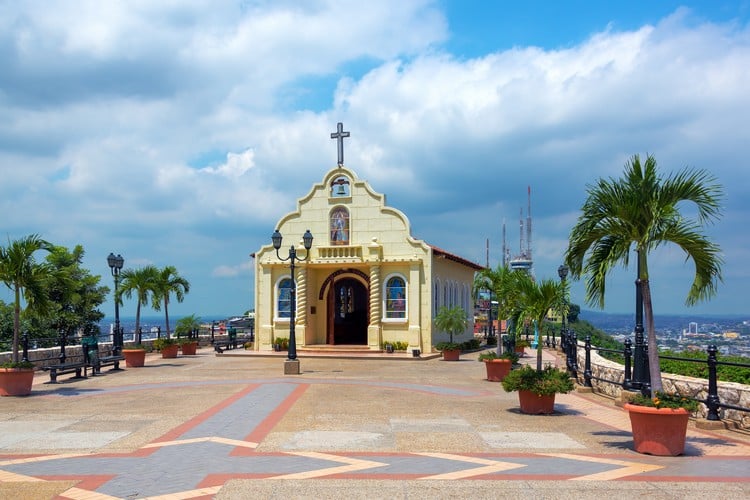
This morning after breakfast in your hotel we’ll bring you to the Durán train station to begin your first South American rail journey. Settle in and get your “sea legs” as a restored vintage steam locomotive pulls you through coastal plantations brimming with bananas, sugar cane, and rice. The Tren Crucero is part of a larger Ecuadorian project to promote sustainable development through railway tourism, and this revamped narrow-gauge line is helping to revitalize the small towns dotting the tracks. Constructed between 1897 and 1908 and once forming the figurative backbone of Ecuador, the country’s railway system fell into disrepair and neglect in the 1990s. You now play a role in the Ecuadorian railway renaissance aboard the Tren Crucero!
At the pueblo of Yaguachi you’ll switch engines and continue onward to Naranjito, the “little orange pueblo.” You’ll disembark the Tren Crucero for your first land excursion to the San Rafael Ranch, where you’ll learn about local cacao production and the indigenous community of Shuar. In the evening, you’ll make your way to your charming accommodation for an evening spent at leisure.
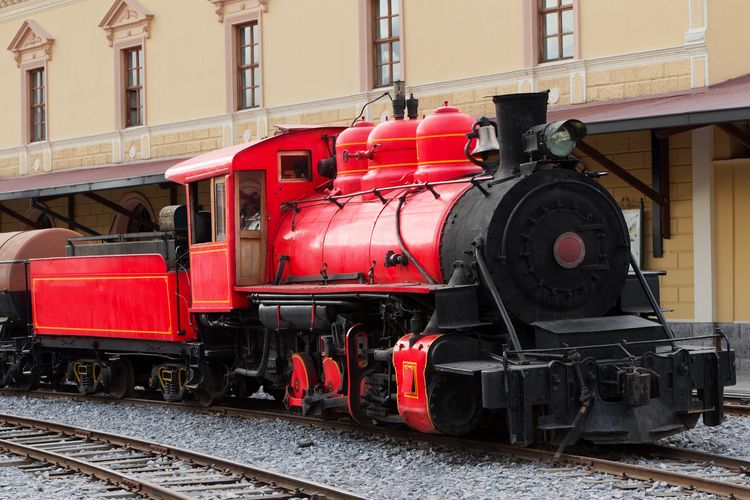
Wake up and smell the cloud forest air, enjoying breakfast in your hotel, before boarding the Tren Crucero again at the Bucay station. Right off the bat today we’ll begin a dramatic ascent into the Andes Mountains, riding along 34 miles of track and ascending over 9,600 feet. There will be a short stop at the Pistishi viewpoint, where you can gaze out over the astounding feat of engineering that is the Devil’s Nose. Known as one of the world’s most difficult railway construction projects, the Devil’s Nose took four years to complete in the early 1900s, and also took the lives of almost 4,000 impoverished workers.Climb aboard and begin your final ascent – an astounding 450 meters altitude change in barely 12 kilometers, zig-zagging directly up the mountainside – and chug onward to the quaint Andean village of Alausi. Disembark for a local lunch and cultural visit, and make sure to return in time to watch the change-over of the steam and diesel electric engines at Colta.
Upon arrival to Riobamba you’ll disembark and have time to visit an indigenous artisan market, before making your way to a traditional hacienda for the night.
.
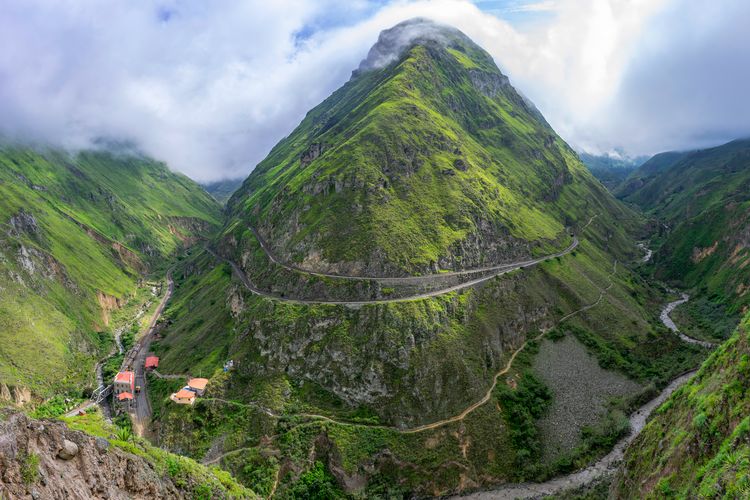
This morning after breakfast we’ll take a quick bus ride to the Urbina train station, which just happens to be the highest station in the country at 3,600 meters above sea level. Here before boarding the Tren Crucero again, you’ll have the spectacular opportunity to meet Baltazar Uscha – Ecuador’s last traditional ice-trader. As his father and grandfather did before him, Baltazar makes the daily trek with his donkeys to carry ice down from the glacier to sell to juice vendors in town.
Bid Baltazar and historical Urbina farewell as you gather steam and begin your descent into what is commonly referred to as Ecuador’s Avenue of the Volcanoes. If the weather favors you today with clear skies, you’ll be able to glimpse up to 20 volcanoes that dot the Andean mountain range. One of today’s excursions will be to the foothills of the iconic and symmetrically-conical Cotopaxi volcano, so lace up your walking shoes!
After your excursion along an Andean forest trail, you’ll reboard the Tren Crucero for today’s final journey leg toward Quito, Ecuador’s capital city and UNESCO World Heritage site. You’ll overnight in one of Ecuador’s most historic haciendas, constructed in 1580.
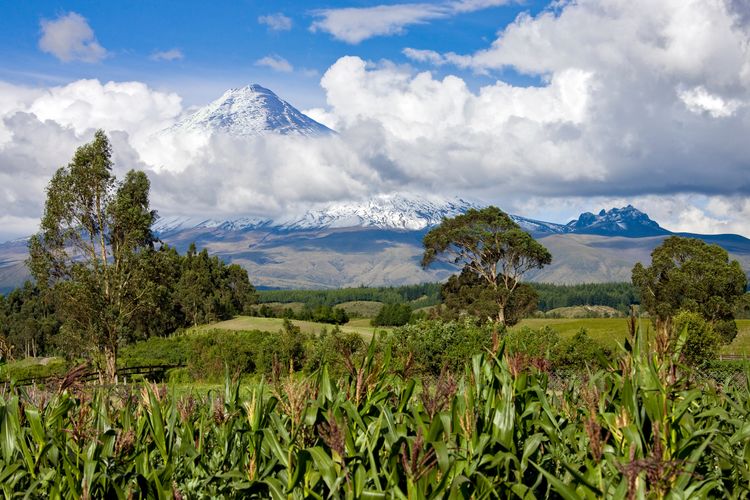
To begin our final day aboard the Tren Crucero, you’ll start with a steam locomotive pulling you across Ecuador’s northern valleys toward Otavalo.Today’s journey will bring you to the front door of some of Ecuador’s finest artisan shops; the artists themselves have been practicing their craft for decades, and their family for generations before them.
First in San Roque you’ll be able to listen to traditional music and meet expert weavers, and in Andrade Marín you’ll enjoy a delicious sampling of traditional food and visit the Imbabura cultural center and museum. Woodworkers will demonstrate their trade for you in San Antonio, and you’ll enjoy a traditional lunch at the Hacienda la Compañia before boarding the train to arrive to Quito. Bid farewell to your South American train journey and settle into historic Quito for the night – tomorrow your adventure continues!
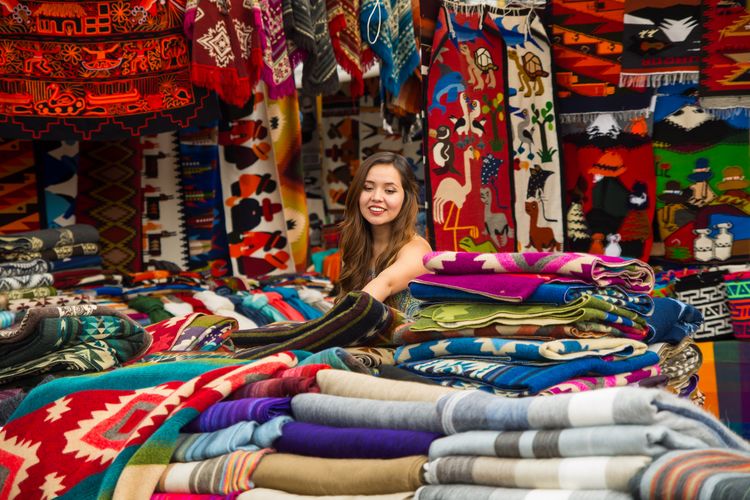
This morning, your private guide will collect you from your hotel and bring you to Quito’s historic Old Town, where you’ll first wander through the Main Plaza, visiting the Government Palace, the city’s main Cathedral, and some of the most important churches constructed in the 16th and 17th centuries. From here, you’ll continue northward toward the Equator Line. Archaeological evidence indicates that the ecuatorial line, known as “Mitad del Mundo” in Spanish, was recognized and worshipped by both Incan and pre-Incan civilizations. Take your turn standing on both the Northern and Southern hemispheres simultaneously!Upon conclusion of your tour, you’ll have the remainder of the afternoon to continue exploring Quito at your own pace.
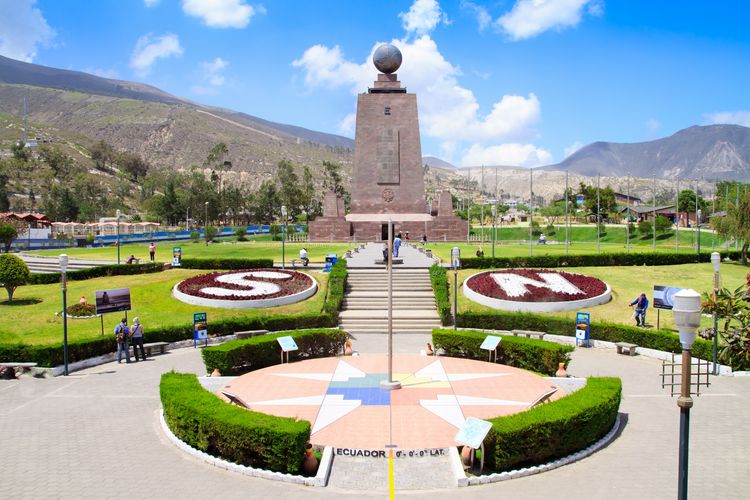
After breakfast, you will head north along the Pan-American Highway making a brief stop in the town of Cayambe to visit a rose plantation. Owing to the quality and variety of its roses, Ecuador is considered one of the countries with the best of these flowers for export. Because of these flowers’ beauty, many nurseries have also decided to become involved tourism activities, showing off the more than 300 varieties of roses grown here – some with stems extending more than six feet high!
You will head to east until reaching the Hacienda Zuleta. You arrive at the hacienda in the afternoon after a drive through lush highlands pastureland. With some luck, on your way you will have enjoyed stunning views of the snow-capped Cayambe Volcano, which is just a few miles away from Zuleta. Your host will welcome you personally at Zuleta and, after checking in to your room, he/she will explain the activities offered at the hacienda. While having some afternoon tea or coffee with you, they will also find out about your personal preferences, needs or questions.
After planning your stay, you will be given a tour of the main building, learn more about Zuleta’s history, see the private library of Ecuador’s ex-President Galo Plaza Lasso, and wander through the beautiful gardens and chapel.
As sun sets it gets chilly at Zuleta, so enjoy some wine and farm-made Ecuadorian cheese beside the fireplace while reading our information folders and books, learning more about our foundation, Galo Plaza, our horse breeding business or about the local culture of Ecuador in the highlands. Finally, you can end the day with a nice hot bath.
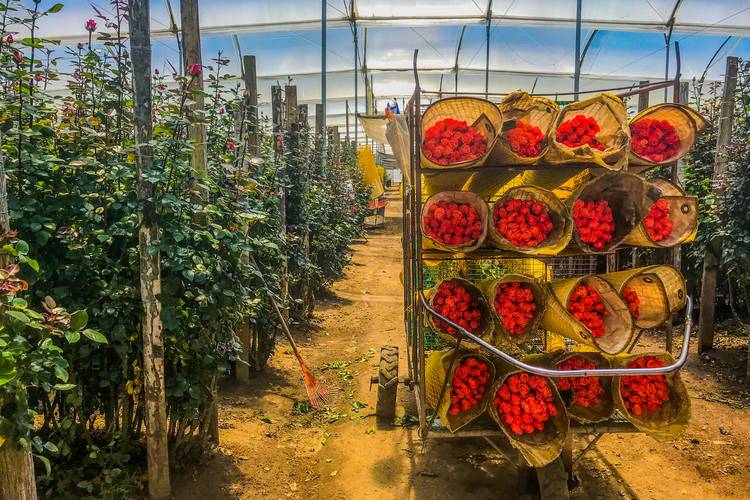
After an exquisite breakfast of eggs, pancakes, muesli, fruit and homemade bread, you will be able to visit the cheese factory. Here, you can learn more about Zuleta´s semi-aged, handmade Ecuadorian cheeses and how the process has changed throughout history.
As mornings are usually sunny throughout the whole year, it is best to take advantage and use this time to take the Condor Tour, by hiking or biking to the condor reserve. In the mornings, you are most likely to spot an Ecuadorian wild condor flying by. The reserve is located 3 km from the guesthouse, in a native forest valley.
The route back takes us through pastureland where we pass between ancient pyramids of the Caranqui culture; seeing both small burial mounds dating back to 700 A.D., and giant ceremonial truncated ramp pyramids from the 13th century.
If you love horseback riding, today could be your day! This is an activity offered at extra cost, and can be booked in person at the hacienda.
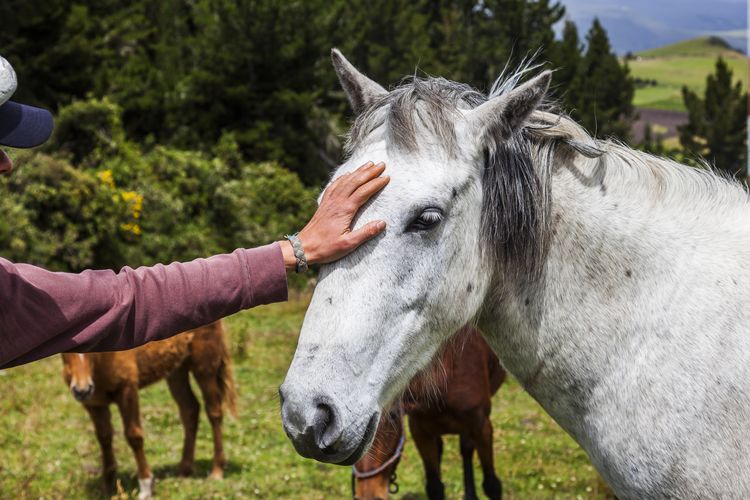
The Galapagos Islands are among the most amazing natural places in the world, and this group of 13 major islands and dozens of smaller islets and rocks, all the result of volcanic activity, certainly appears to be out of this world. The islands are in fact, an unpredictable wilderness, a living laboratory of evolution filled with an extraordinary population of unique species, which have developed apart from human influence. For nature lovers, the perfection is even greater, birds and more birds, playful sea lions, exotic plant life, volcanoes and haunting land seascape.
Early this morning we will escort you to the national airport in order to board flight to the wondrous Galapagos Islands (approximately 2.5 hours). A member of your ship’s crew will then welcome and accompany you to your boat.
PM: This afternoon, we will explore the northern coast of Santa Cruz Island to visit Dragon Hill, which is an excellent spot for observing lava lizards, Darwin finches, and wading birds. On the way to Dragon Hill, we will rest at a small lagoon that’s a popular feeding place for colorful birds and flamingos.
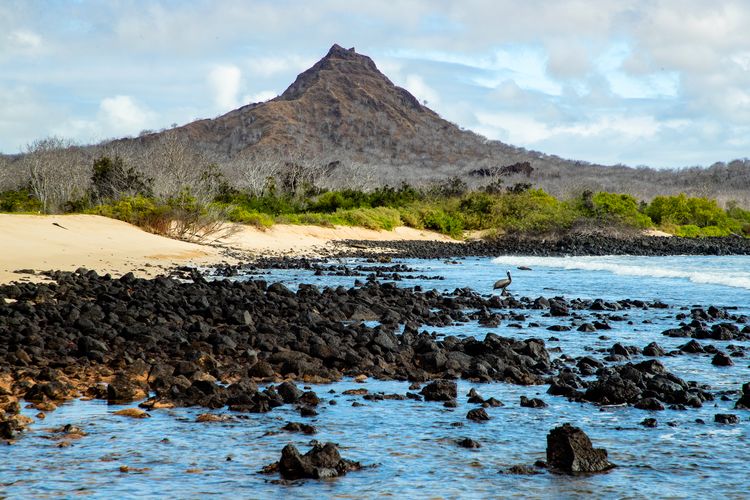
AM: This morning, we will follow the route that Charles Darwin once took and sail around the massive tuff-rock called “Kicker Rock,” which is a nesting site for hosts of seabirds. Here, you will be able to find Blue-footed boobies, pelicans, and frigate birds. This is a great site for scuba diving, and hammerhead sharks can be seen in the area. Later, we will make a wet landing on San Cristobal Island to visit Cerro Brujo (“Wizard Hill”), a fascinating lava hill located on the northeastern coast of San Cristobal Island. Here you will find exceptional views of Kicker Rock, as well as the southern part of San Cristobal and the adjacent coast. On this site’s rocks, you can observe Blue-footed boobies, seagulls, Black-necked Stilts, Ruddy Turnstones, Whimbrels, other sandpiper species, White-cheeked pintails and some pelicans. The protected bay is also popular among young sea turtles and rays, which makes swimming and snorkeling here particularly exciting.
PM: In the afternoon, we will visit Lobos Island, located across from San Cristobal Island. This is a seasonal nesting spot for Blue-footed boobies and Frigate birds. You also can enjoy swimming and snorkeling with sea lions in the island’s calm bay.
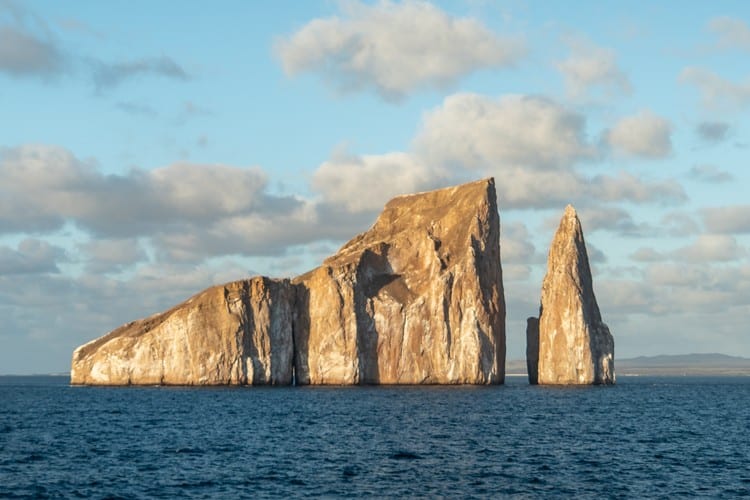
AM/PM: Today, we will sail to Española Island, the southernmost, oldest and one of the most bio-diverse islands of the Galapagos archipelago. Its English name is “Hood Island,” in honor of the British admiral Samuel Hood. Because of its isolated position, there is much endemic wildlife to be explored here – in addition to great snorkeling from Española’s remarkably beautiful beaches. Located on Española Island’s eastern shore, Gardner Bay is noted for its turquoise-colored waters and its magnificent beach, which we will visit this afternoon. Around the bay’s small Gardner and Osborn islets, snorkelers will find an abundance of fish, as well as the occasional sea turtle and benign sharks. The bay is also frequented by a transient colony of Galapagos sea lions who love to swim with people.
PM: Later, to end the day, we will go on an excursion on Española Island’s Suarez Point. One of the archipelago’s most outstanding wildlife areas, this site boasts a long list of species along its cliffs and its sand and pebble beaches. In addition to five species of nesting seabirds, the curious and bold Española Island mockingbirds are found here, as are other birding favorites that include Galapagos doves, Galapagos hawks, Swallow-tailed gulls and the world’s largest colony of Waved albatross – an unequivocal highlight during mating season (May-December). Several types of reptiles are unique to this island, including the marine iguana and the oversized lava lizard. In fact, this is also the only site where you will be able to see “red” sea iguanas. In addition, when heavy swells are running, Suarez Point is the site of a spectacular blowhole whose thundering spray shoots 30 yards up into the air. The trek here is on a stony path about a mile long, though the duration of this excursion is about 3 hours.
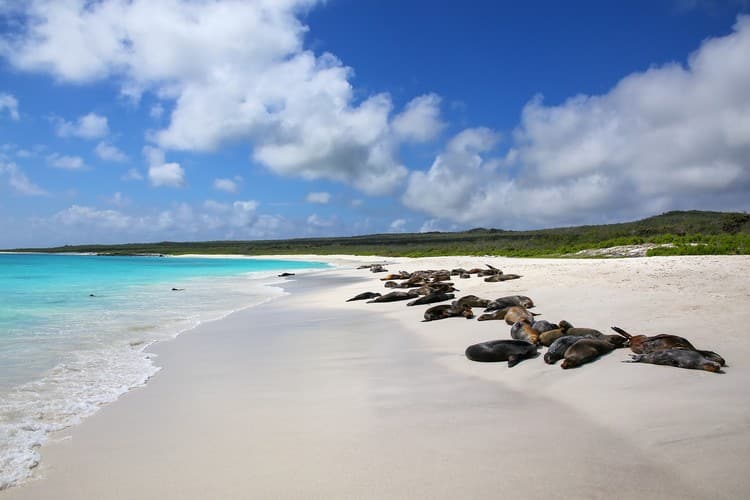
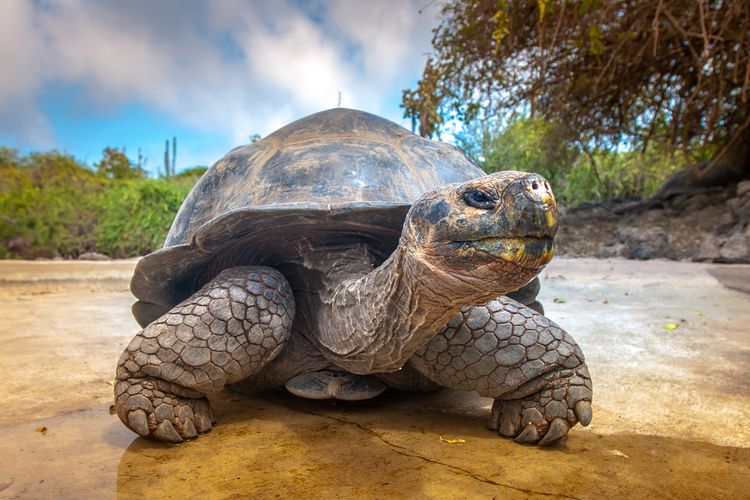
AM: We will begin the day exploring South Plaza Island, located just east of Santa Cruz Island. After a dry landing on the northern part of this life-filled islet, you will encounter colonies of sea lions and land iguanas. While on the steep banks, you can see numbers of birds – like nesting Tropicbirds and Fork-tailed seagulls – but most of all, you will enjoy the beautiful views from either atop the steep banks or while strolling along the base of the cliff. Opuntia cactuses grow on this island and the vegetation changes color throughout the year.
PM: Concluding these amazing experiences in the Galapagos Islands, you will be driven to the Baltra Island airport and assisted with checking in for your return flight to the Ecuadorian mainland.
Enjoy your last look back at the “enchanted islands,” a unique paradise with inspiring natural wonders. From Baltra, you will fly back to mainland Ecuador to Quito.
Once you arrive in Quito your guide will pick you up and transfer to your hotel close to the airport, where you will spend your last night in Ecuador.

In the morning according to your flight schedule we will take you to the airport for your international flight home.Thank you for traveling with Kuoda Travel, and buen viaje!
Like the sound of this Ecuador private tour? Get in touch with Kuoda and we’ll start devising your very own customized Ecuador private travel experience.
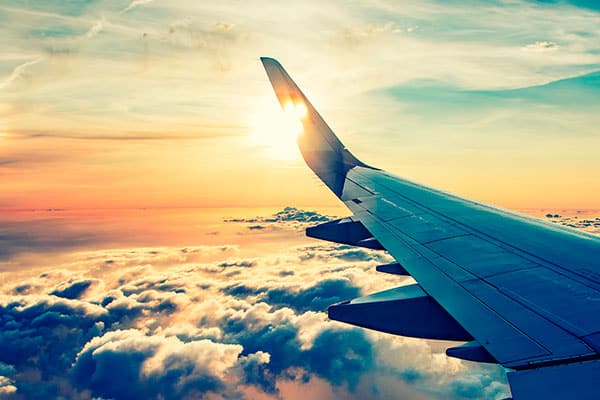
- Personalized itinerary planning
- A Kuoda host to assist you in every location
- Domestic flights
- The majority of meals in the itinerary
- Daily activities and excursions as indicated in the itinerary
- Galapagos National Park Entrance Fee & Transit Control Card
- International flights to and from your home country
- Travel insurance
- Meals not specified
- All gratuities
Talk with your Kuoda Travel expert to help find the right hotels for you during your personalized luxury tour.
Related Ecuador Tours
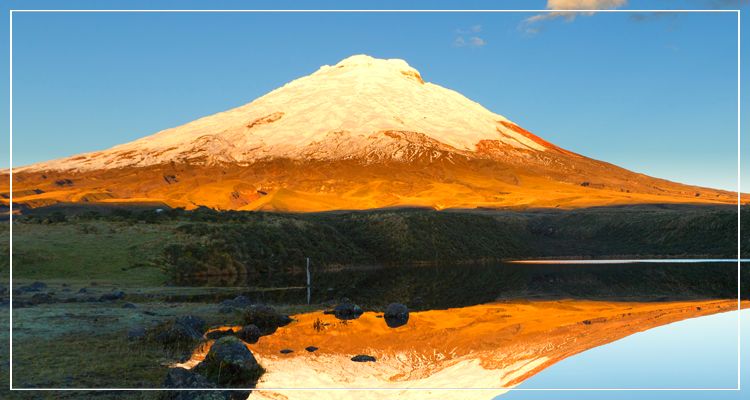
Our team of luxury travel specialists that have more than 30+ years of knowledge within South America’s travel industry. Our local insight of South America’s most inspiring places is unrivaled.

